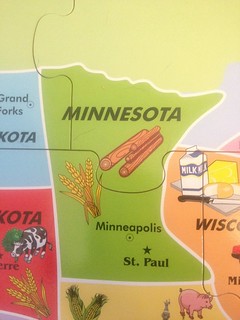This year I have decided to be more (math) content driven in my own personal learning, mostly inspired by the work Dan Meyer has been sharing on his blog. I have learned a lot in the last couple years about differentiated instruction, personalizing learning and using technology to help my classroom run more efficiently. My focus this year is to take advantage of that efficiency and provide more opportunity for depth and enrichment for my students in my content area.
As a first step in that direction I have created an extension menu for my first unit with my Geometry students. This is not a new idea or a concept I have come up with on my own but I wanted to share it here in wanting to be transparent on how I am wanting to grow as an educator and hopefully stimulate similar growth for others.
As I try to differentiate instruction for students, I often find that no matter what I do, some students will still get through the standard material sooner. Rather than creating a "race to the finish" in class I'm taking a different approach and compacting the curriculum for those students using pretesting and allowing them to work on extending the learning beyond what the majority of the class will do. The content ideas for the extensions come from Pinterest, my smartphone camera roll and ideas I get through Twitter. I put those ideas into a grid and try to vary the content in a way that students hit the learning targets in a tic-tac-toe fashion while allowing them to have some choice in the matter related to the final format and presentation audience of their creation.
Here is an example of the grid I compiled today:
| From a Google satellite image, this is a skyview of the roundabout at Super Target in Blaine before the bull’s eye was covered in black. Use Google Earth tools to take measurements and decide how much red and white paint must be ordered to repaint it. Write your findings as a letter to Target trying to convince them to bring back the bull’s eye design in their parking lot again. | Analyze a piece by Escher or Gonsalves and discuss all the elements present in the piece and how the Geometry leads the viewer to believe the illusion present. Use geometry vocabulary in our book and present your findings in one page, formatted to be hung on the classroom wall. Make sure to cite your source for the image you are including with the artist name and the piece title. | Analyze the structure of a spider web in this image as if you were a natural biologist in the field attempting to make a new discovery. Make connections to the Geometry you had learned as a student present in the web and any patterns that you find. Summarize your findings in written form as if you were submitting it to a popular science journal. |
| Create an art piece to be displayed in our school using concepts of our learning targets in the piece. Include a paragraph description card explaining your piece and the geometric elements present in your art. | Use a known distance in this image to calculate the accuracy of this map from a children’s puzzle. Present your findings as if you were quality control for this toy manufacturer. If you decide that it is inaccurate, show where a better placement of the cities should be. Justify your results using math. | If I am only interested in re-siding my house without any concern for design appeal, which size plank will bring the lowest cost per square foot? The highest cost? Are these costs affected by the size of my house? |
| Create a geometric pattern that is to scale that you believe would look nice in a 20 foot by 20 foot patio. Use the block dimensions and prices in this photo. Calculate your cost and then determine how your cost compares to the cheapest and most expensive block arrangement possible. Prepare three boards that you would present to a landscaping client prior to beginning work. | Create a visual presentation in a format of your choosing of our learning targets that could be used by a struggling student to help better understand the ideas in our unit. You may include videos, photos or diagrams that you think are helpful. Make sure that all learning targets are addressed. | Conduct a geometric photo scavenger hunt. Create a blog post of your favorite 10 photos to be shared with our class with explanations of both why you chose each photo to be included and what geometry elements are present in each photo. |


No comments:
Post a Comment